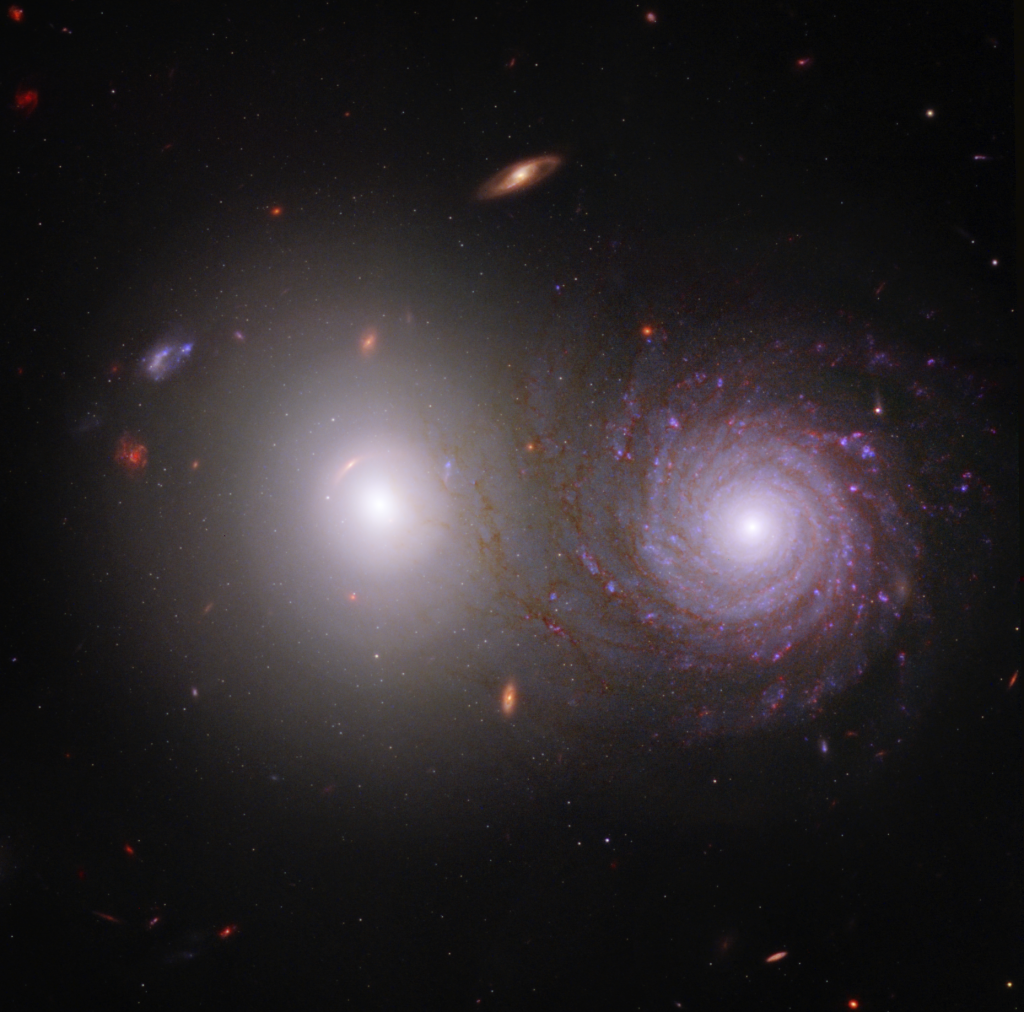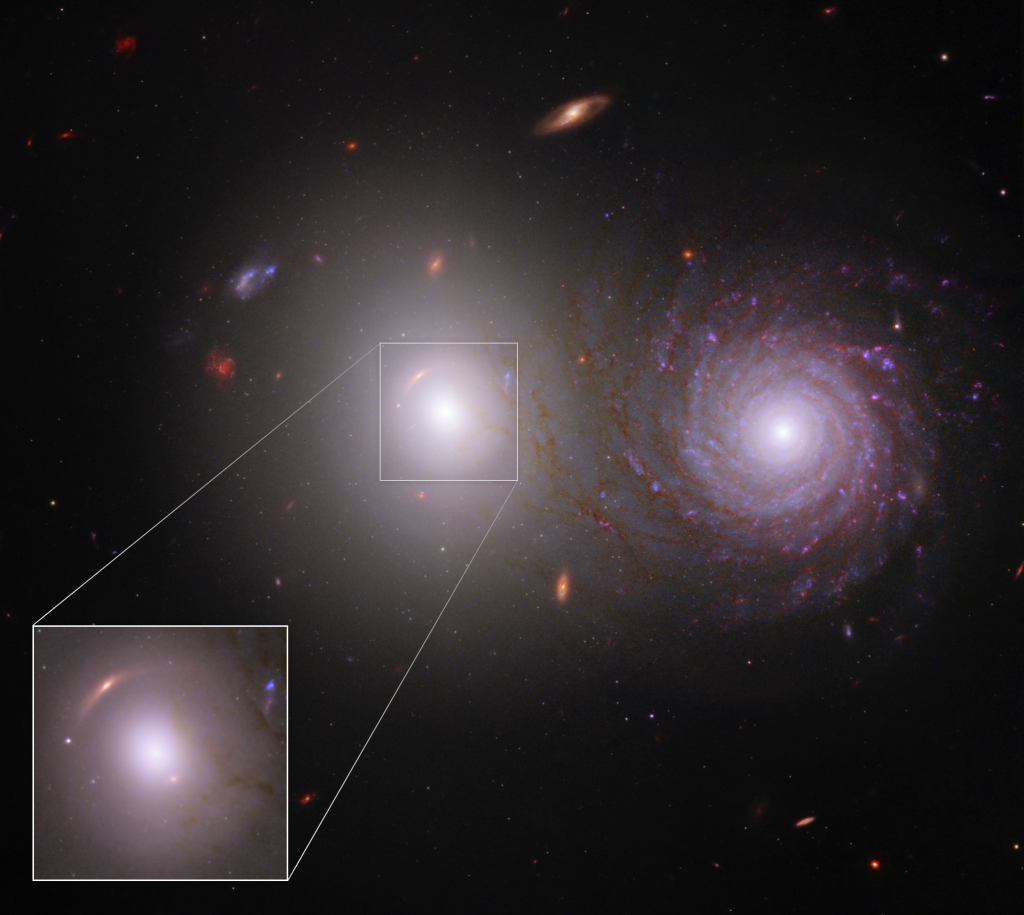Editor’s Note: This post highlights data from Webb science in progress, which has not yet been through the peer-review process. Here, Webb interdisciplinary scientist Rogier Windhorst and his team discuss their observations.
“We got more than we bargained for by combining data from NASA’s James Webb Space Telescope and NASA’s Hubble Space Telescope! Webb’s new data allowed us to trace the light that was emitted by the bright white elliptical galaxy, at left, through the winding spiral galaxy at right – and identify the effects of interstellar dust in the spiral galaxy. This image of galaxy pair VV 191 includes near-infrared light from Webb, and ultraviolet and visible light from Hubble.

“Webb’s near-infrared data also show us the galaxy’s longer, extremely dusty spiral arms in far more detail, giving the arms an appearance of overlapping with the central bulge of the bright white elliptical galaxy on the left. Although the two foreground galaxies are relatively close astronomically speaking, they are not actively interacting.
“VV 191 is the latest addition to a small number of galaxies that helps researchers like us directly compare the properties of galactic dust. This target was selected from nearly 2,000 superimposed galaxy pairs identified by Galaxy Zoo citizen science volunteers.
“Understanding where dust is present in galaxies is important, because dust changes the brightness and colors that appear in images of the galaxies. Dust grains are partially responsible for the formation of new stars and planets, so we are always seeking to identify their presence for further studies.

“The image holds a second discovery that’s easier to overlook. Examine the white elliptical galaxy at left. A faint red arc appears in the inset at 10 o’clock. This is a very distant galaxy whose light is bent by the gravity of the elliptical foreground galaxy – and its appearance is duplicated. The stretched red arc is warped where it reappears – as a dot – at 4 o’clock. These images of the lensed galaxy are so faint and so red that they went unrecognized in Hubble data, but are unmistakable in Webb’s near-infrared image. Simulations of gravitationally lensed galaxies like this help us reconstruct how much mass is in individual stars, along with how much dark matter is in the core of this galaxy.
“Like many Webb images, this image of VV 191 shows additional galaxies deeper and deeper in the background. Two patchy spirals to the upper left of the elliptical galaxy have similar apparent sizes, but show up in very different colors. One is likely very dusty and the other very far away, but we – or other astronomers – need to obtain data known as spectra to determine which is which.”
About the authors:
Webb interdisciplinary scientist Rogier Windhorst of Arizona State University and his team obtained the data used in this image from early results of the Prime Extragalactic Areas for Reionization and Lensing Science (PEARLS) JWST Guaranteed Time Observation (GTO) programs, GTO 1176 and 2738. Additional data from Hubble’s STARSMOG snapshot program (SNAP 13695) and GO 15106, were added. Jake Summers, also of Arizona State, performed the pipeline data reduction. The dust analysis was led by William Keel of the University of Alabama, while the Hubble data acquisition was led by Benne Holwerda of the University of Louisville in Kentucky. The detailed gravitational-lensing analysis was conducted by Giovanni Ferrami and Stuart Wyithe, both of the University of Melbourne, Australia and ASTRO 3D, Australia.
Related science papers:
Webb’s PEARLS: dust attenuation and gravitational lensing in the backlit-galaxy system VV 191
